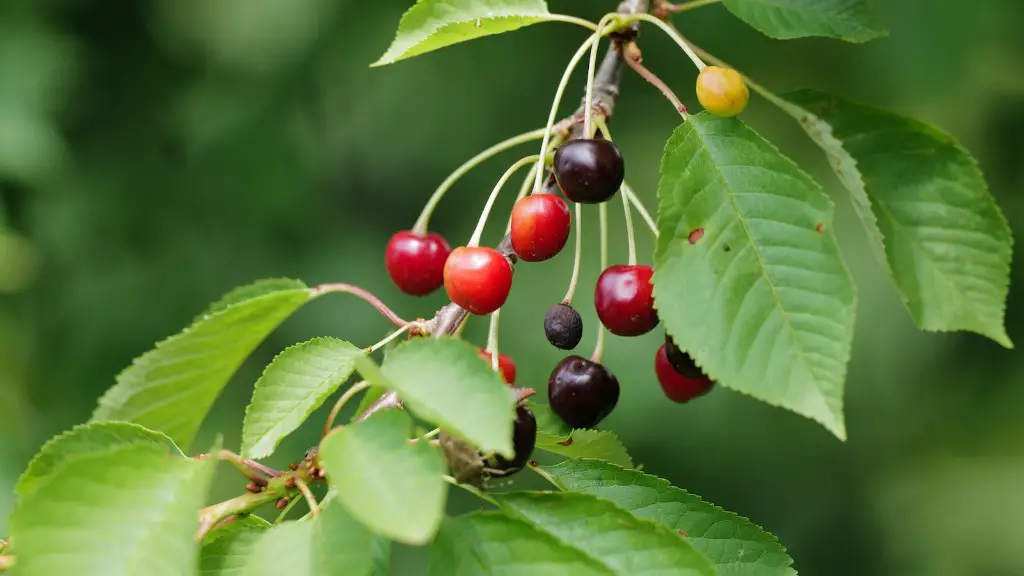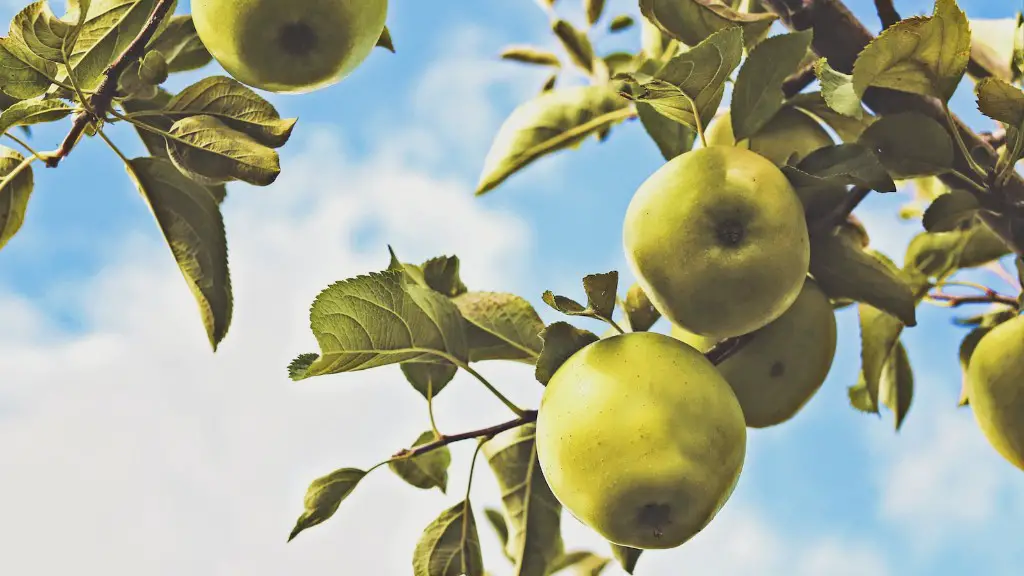Introduction to Avocado Tree Growing
Avocados are one of the most popular fruits in the world. But how big do avocado trees get? Avocado trees typically reach between 65 to 100 feet in height and can live more than 300 years. The size of the tree is determined by a combination of factors such as the region in which it is grown, the soil and water quality, and the climate.
Avocado trees can produce fruit for many years, but it may take up to three years after planting for them to start producing. Avocado farmers usually prune the trees every three to five years to ensure they grow at a healthy rate, increase yields, and shape the tree. Pruning is an important step that helps promote healthy growth, as it removes dead or weak branches to allow air, light, and water to penetrate the tree.
Size and Lifespan
Avocado trees can vary in size depending on their maturity, growing conditions, and various other factors. In general, avocado trees are classified as semi-dwarf, dwarf, and standard-size. A semi-dwarf avocado tree typically grows between 15 and 20 feet tall while a dwarf variety typically grows only 6 to 10 feet tall. A standard-size tree can grow an impressive 65 to 100 feet tall. Most trees will not reach full height unless they are left unpruned and given enough space to grow.
Avocado trees have an incredibly long lifespan if the right growing conditions are met. A healthy tree can easily live more than 300 years, but the average lifespan is usually around 50 years. The oldest known avocado tree still in production is located in Mexico and is estimated to be more than 200 years old.
Adaptation to Different Environments
Avocado trees are adapted to a variety of climates and soils. These trees can survive temperatures as low as 25 degrees Fahrenheit, making them better suited for cooler climates than some other fruit trees. They can also tolerate saltiness in the soil, making them ideal for growing near the ocean.
Avocados are particularly well-suited to growing in many parts of California, Hawaii, Florida, and other warm climates. The ideal temperature for growing avocados ranges from 65 to 85 degrees Fahrenheit. They also require full sunlight and plenty of water to stay healthy and produce fruit.
Avocado Yield and Harvesting
Avocado trees usually produce fruit between late spring and early summer. Trees typically reach maturity between three and five years after planting and can produce fruit year-round. A mature avocado tree can produce between 2,000 and 8,000 fruit each year, depending on the variety and the tree’s growing conditions.
Harvesting of avocados is a careful process. Unripe fruits will not ripen properly on the tree and must be harvested wet, or “green,” and stored before ripening. Ripe fruit can be harvested simply by shaking the tree or by cutting small branches. It is important to handle the fruits carefully to avoid bruising.
Fertilizing Avocados
Fertilizing avocado trees is an important step in growing a healthy and productive tree. Trees should be fertilized once or twice a year. Fertilizers should be applied in late winter or early spring when the trees are beginning to bloom, with a second application in early summer before the onset of hot temperatures.
The type and amount of fertilizer used should be tailored to the specific needs of the tree, as well as the type of soil it is growing in. Organic fertilizers such as manure, compost, and fish meal are some of the best for avocado trees. Organic fertilizers are slow-release and better able to promote healthy root growth.
Watering Avocados
Water is an essential part of avocado tree growth and health. Proper watering is essential for increasing yields, preventing pest infestations, and improving fruit quality. Young avocado tree should be watered every five to seven days in the summer, and every 10 to 14 days in the winter. Established trees should be watered at least once a month during the summer and every two months or less during the winter.
Water is best absorbed by the root system when applied deeply and slowly, so drip irrigation is a great option for avocado trees. Proper watering helps ensure the plants get the water they need without causing rot and fungal disease.
Pruning Avocados
Pruning an avocado tree is an important task that helps promote healthy growth and can increase yields. Pruning helps remove dead or weak branches and allows air, light, and water to penetrate the tree. Pruning can also help keep the tree’s growth in check and shape the tree into a healthier and more aesthetically pleasing shape.
Trees should be pruned in late winter or early spring, before the onset of hot, dry weather. Pruning tools such as hedge shears, pruning saws, and loppers can be used to make clean cuts and to reach higher branches. Pruning should always be done with care and attention to ensure the tree does not become stressed or damaged.
Protecting Avocados from Pests and Disease
Avocado trees can be plagued by pests and diseases, so it is important to take steps to protect the tree. Some of the most commonly encountered pests are caterpillars and slugs, while some of the most common diseases are root and crown rot, anthracnose, and powdery mildew.
The best way to protect an avocado tree is to practice good cultural practices such as proper pruning, fertilizing, and watering. Keeping the tree healthy helps prevent pests and diseases and makes the tree less vulnerable to attack. Pesticides may be necessary if the tree is infested, but they should only be used as a last resort.
Harvesting, Packaging, and Selling Avocados
Once avocados are harvested, they must be quickly packaged and transported to market to avoid spoilage. The fruit should be washed, wrapped in newspaper or tissue paper, and placed in a breathable container for transportation. It is also important to label and track the shipment to avoid mix-ups.
Selling avocados can be done either directly to customers or through intermediaries such as grocery stores or restaurants. Wholesale prices are typically lower than retail prices. When selling avocados, it is important to keep quality control in mind by closely inspecting the fruit and ensuring it is fresh and free of damage.
Fruit Ripening and Storage
Ripening avocados can be done by storing them in a paper bag with a ripe apple or banana. The ethylene gas given off by the other fruit will cause the avocado to ripen. It is important to check the fruit regularly and remove it from the bag once it has ripened.
Once ripe, avocados can be stored in the refrigerator for up to a week. To extend the life of the fruit, it is important to keep the skin intact, wrap the fruit tightly in plastic wrap, and store it in the coldest part of the refrigerator. If the avocado is cut open, the unused portion should be wrapped in plastic wrap and stored in the refrigerator.
Uses of Avocados
Avocados are highly nutritious and can be used in a variety of dishes such as salads, guacamole, smoothies, and sandwiches. They can also be eaten on their own with a sprinkle of salt or used as a topping for tacos, burritos, and other Mexican dishes.
Avocado oil is also becoming increasingly popular as an ingredient in beauty and skincare products. The oil is rich in vitamins and fatty acids, making it a great choice for preventing wrinkles, fighting acne, and reducing inflammation.
The Avocado Industry
The avocado industry is booming in many parts of the world. Demand for avocados continues to increase, and the increasing availability of different varieties has helped make the fruit more popular.
The US is the biggest consumer of avocados in the world, with Mexico supplying the majority of the domestically consumed fruit. Mexico is the largest producer of avocados in the world and the industry is expected to continue to grow in the coming years.
Conclusion
In conclusion, avocado trees vary in size depending on maturity, environment, and other factors. Their lifespan can easily reach over 300 years with proper care and maintenance. Fertilizing, watering, pruning, and protecting the tree from pests and diseases are all important steps in growing a healthy and productive tree. Avocados have a wide range of uses, from cooking to beauty products, and the avocado industry is booming in many parts of the world.


